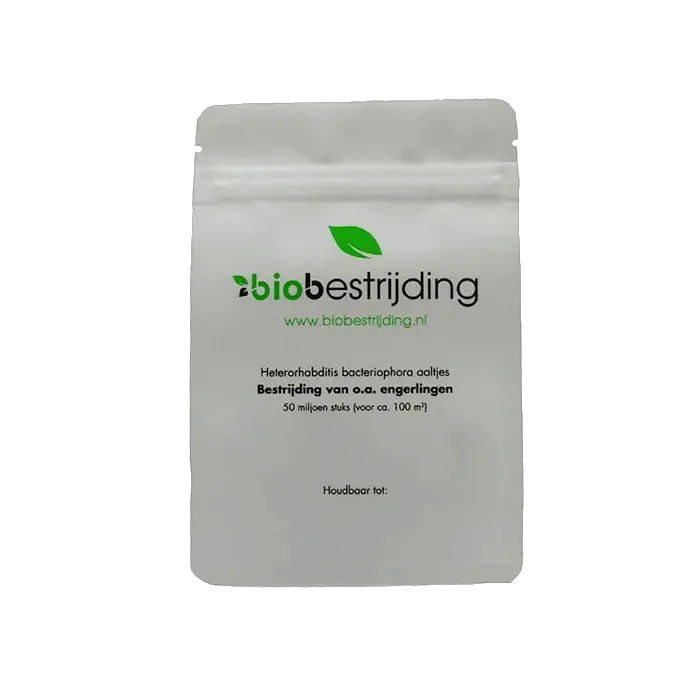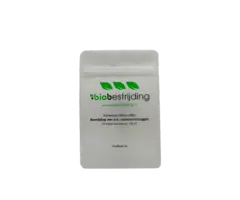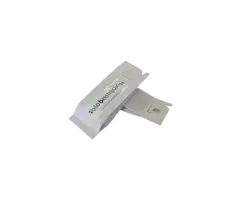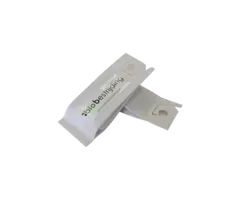BioBestrijding | Nematodes against Grubs ~ Heterorhabditis Bacteriophora
Bio Control Nematodes against grubs
Attention! This product consists of live animals and is only available for order in the Netherlands or Belgium. If you order more than just Bio Fight, there will be an additional charge of € 7.95 due to dropshipping from the supplier.
Heterorhabditis bacteriophora nematodes (nematodes) can be used as biological control agents of pupae and larvae of different beetle species (grubs). grubs are the underground larvae of beetles that belong to the family of the leaf beetles (Scarabaeidae). They eat the roots and other underground parts of all kinds of plants, causing a lot of damage.
They come in mineral powder ready to be mixed with water. With this mixture you can easily spray the soil with a watering can.
WHAT DAMAGE DO GRUBS CAUSE
Underground larvae of beetles belonging to the family of the leaf beetles (Scarabaeidae) are called grubs. These are beetles such as the cockchafer, rose beetle and cockchafer. grubs do damage to plants by eating the roots and other underground parts of plants. Especially in the period between July and September this can cause a lot of damage, for example, grasslands turn yellow and partially die. Larger crops cannot escape beetle larvae and can die from the damage they do to the roots. In addition, there is the adverse effect of other animals that feed on grubs. These animals (such as birds) search for grubs and damage them in their search. Because the grubs are in the ground they are difficult to reach, it is therefore important to treat the entire lawn with nematodes so that the grubs have no chance to spread and escape.
NEMATODES ARE EFFECTIVE AGAINST
Heterorhabditis bacteriophora nematodes are active against the larvae and pupae of the following beetle species:
The Aphodius dung beetle, the Serica brunnea leaf beetle, the Hoplia philanthus salland beetle, the Phyllopertha horticola rose beetle, yew beetle, weevil, cockchafer and cockchafer.
WHAT ARE NEMATODES?
Nematodes are roundworms (Nematodes) that occur naturally in the soil. They are very small (0.3 to 0.7 mm) and therefore invisible. They are harmless to humans, animals and plants.
HOW DOES PEST CONTROL WITH NEMATODES WORK?
Nematodes live in the soil and search for larvae and pupae of pest insects. They cannot fight adult specimens. There are many types of nematodes, each of which specifically targets a particular type of host. They enter their prey and infect it with a bacterium from their intestinal tract. This bacteria multiplies in the host and stops it from causing damage and eventually dies. Nematodes then feed on these same bacteria, which in turn cause them to multiply. A single insect larva can be the hotbed of thousands of nematodes. The pest insects are thus attacked by a true army of nematodes. As soon as the host is killed, the nematodes leave it and look for new hosts. As long as prey is present in the soil, the nematodes can maintain themselves and multiply.
TEMPERATURE AND SURROUNDINGS
The nematodes can be used at a soil temperature between 4 and 34 degrees. It is important that the nematodes are applied to a moist soil that should not dry out for several weeks for optimal effect. Regular spraying in dry weather is therefore a must. During or just before a rain shower is an ideal time to release the nematodes. Note: do not let go during night frost.
APPLICATION
When exactly you need to release the nematodes depends on the development phase of the host in question. Ideally, the host is in a sensitive state so that the nematodes can easily penetrate prey. Since nematodes only target the larvae and pupae of the pest insects, they are best released in late spring and early fall. We recommend about 500,000 nematodes per m² for a minor infection. With a larger infection, you can increase this number to 1 million nematodes per m². You can repeat this bet after 2-3 weeks.
Releasing with soil application is as follows:
- Allow the nematodes to reach room temperature at least half an hour before use.
- Take a watering can with an opening of at least 0.5 mm. Remove any strainers or seals so that the water comes out freely.
- Take a bucket and fill it with 5 to 10 liters of lukewarm water (15-20 degrees). Throw the entire pack of nematode powder into the bucket and stir well so that no lumps are visible. Then let the mixture soak for 5 minutes. Stir well afterwards.
- The advice is 500,000 nematodes per m². You must therefore dilute the 10 liter mixture proportionally so that you spray the correct number of nematodes per m².
- Spray the mixture evenly over the bottom. Keep in mind that the soil remains moist for the first 2 weeks.
- After treatment, spray the soil well so that any above-ground nematodes still have the opportunity to get into the soil.
SHELF LIFE
We advise to use the nematodes as soon as possible after receipt. If you still want to store them longer, you can store them in a refrigerator (2-8 degrees). The expiry date is printed on the packaging.
Please note! If you order more than just BioBestrijding, there will be an extra charge of € 7.95 because of dropshipping from the supplier.










